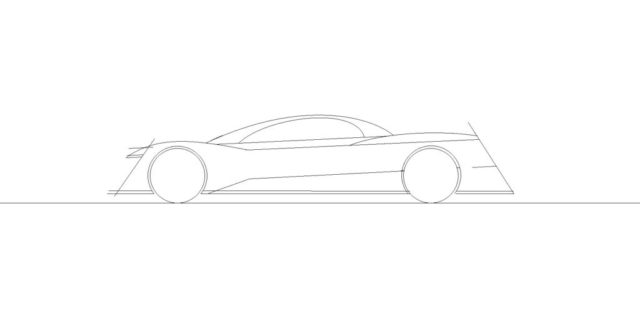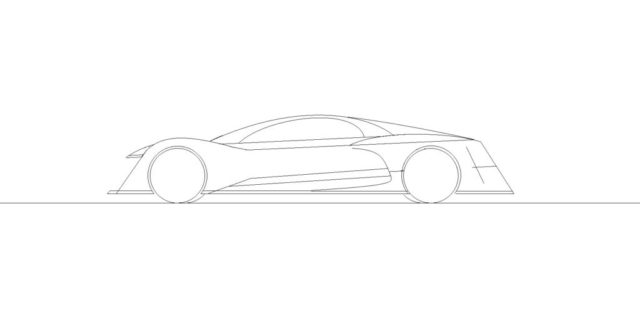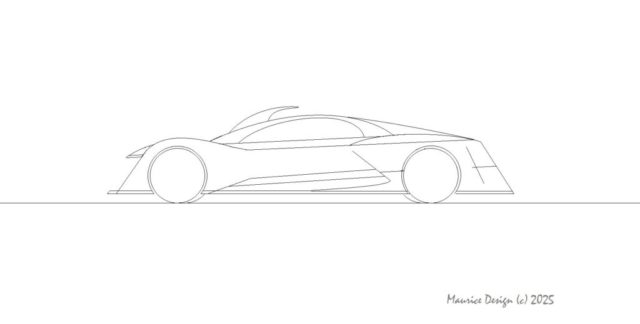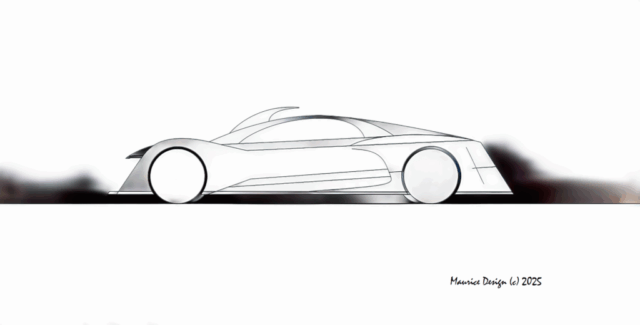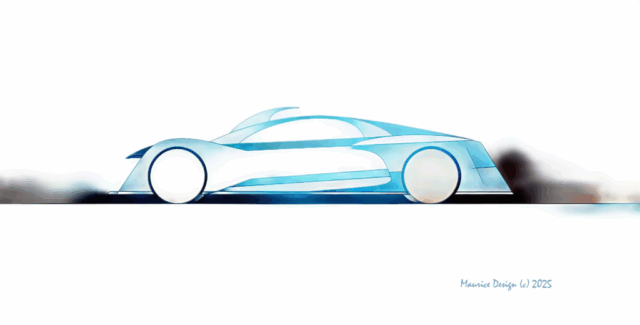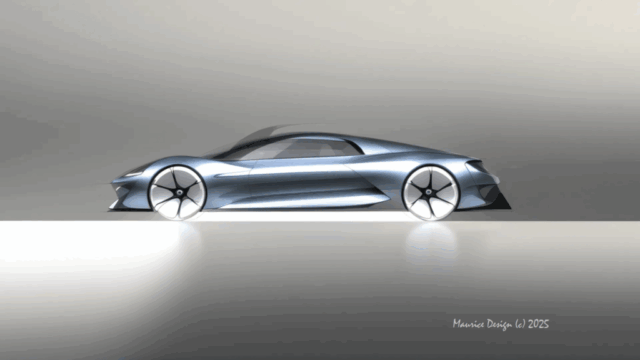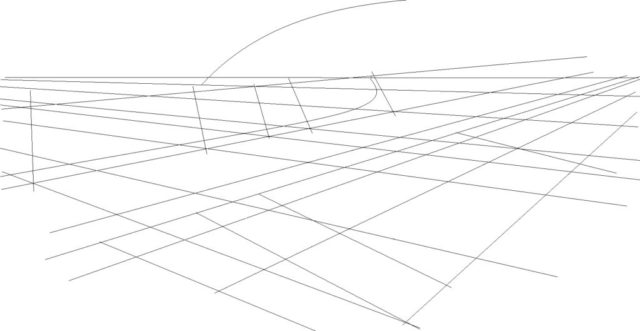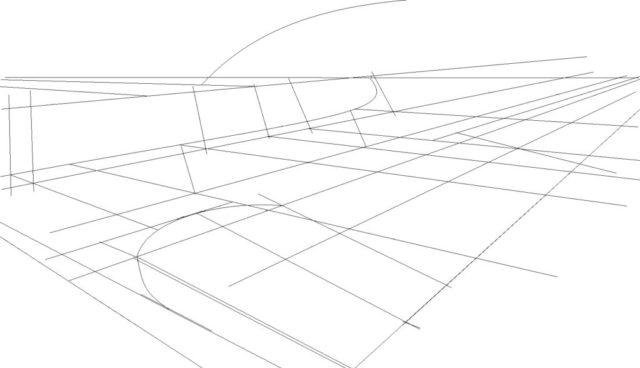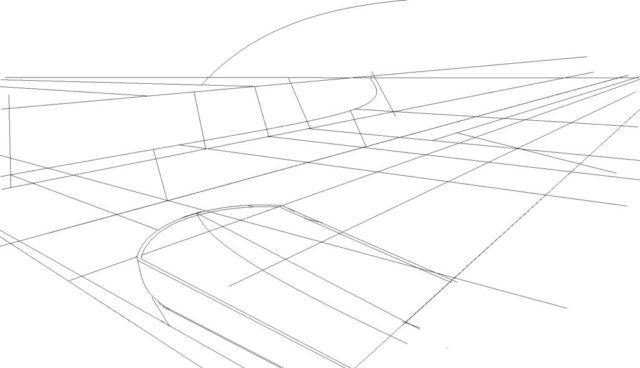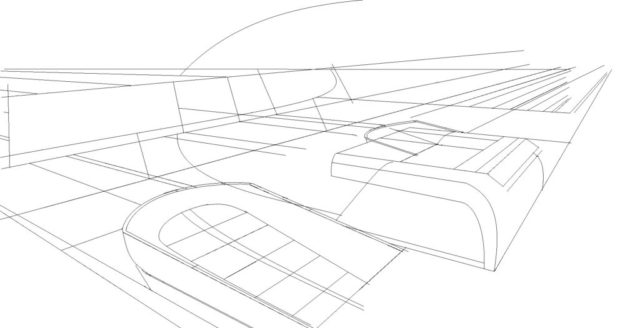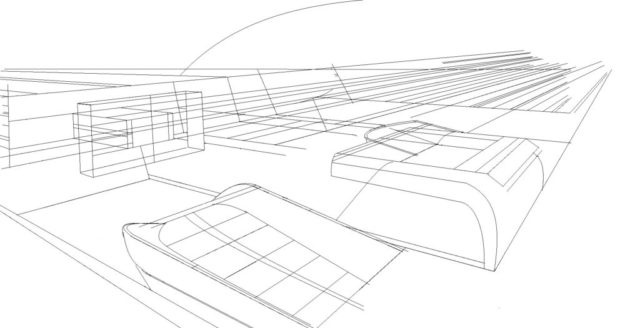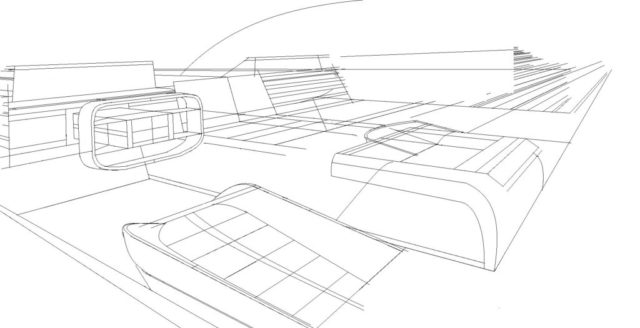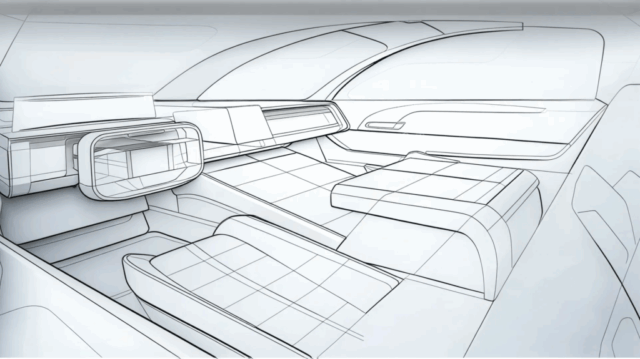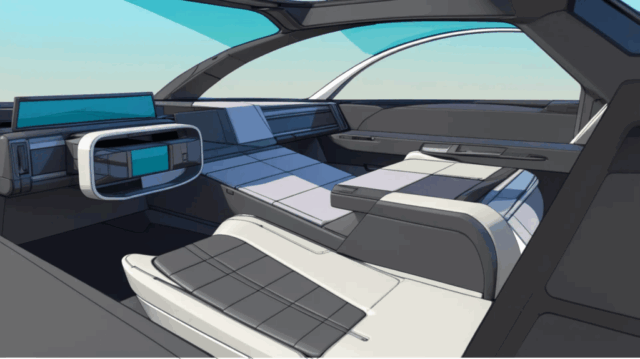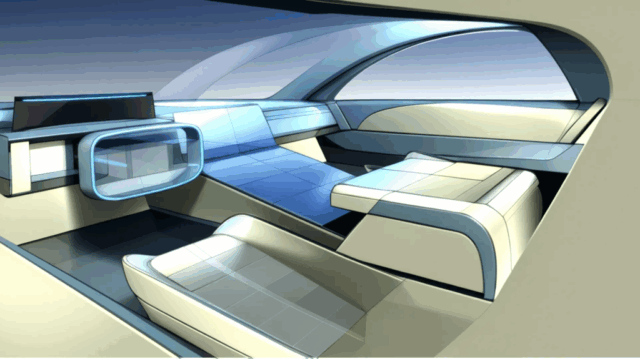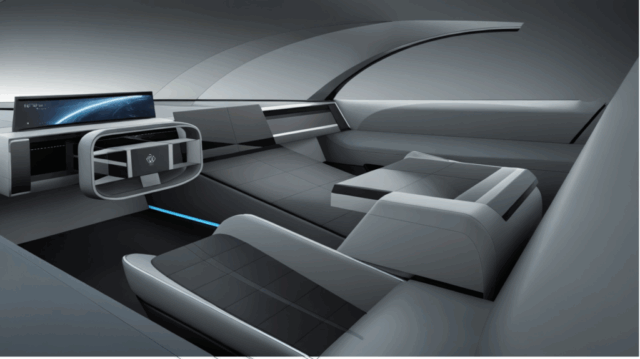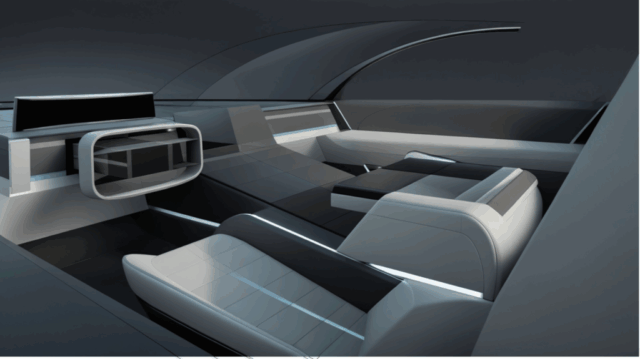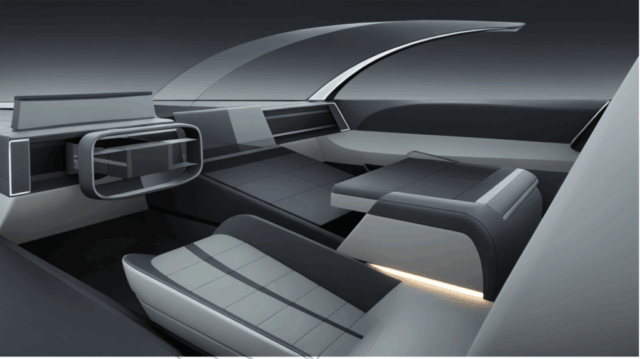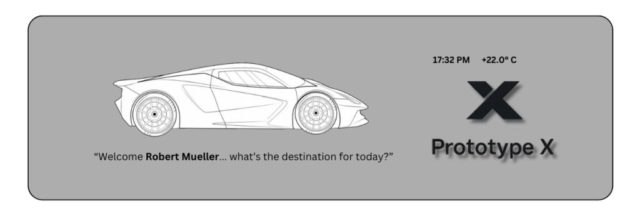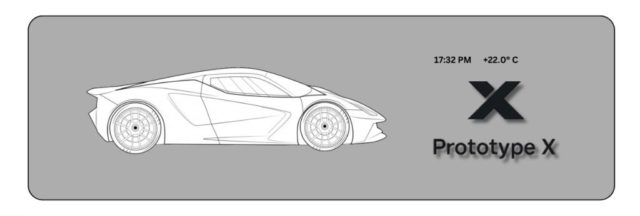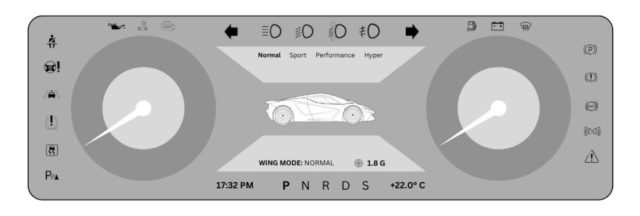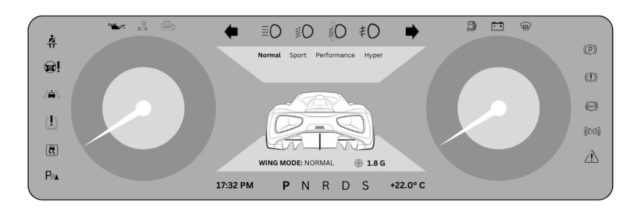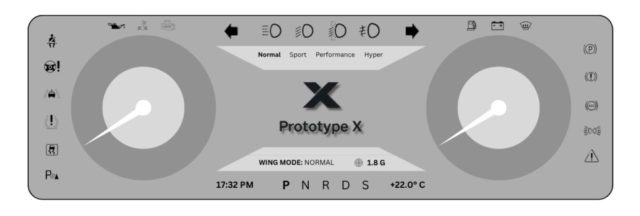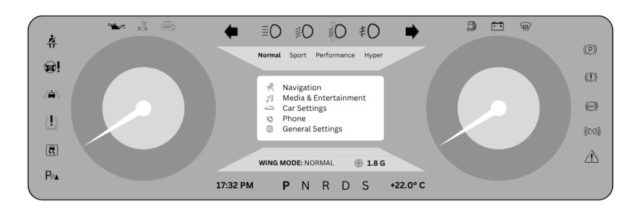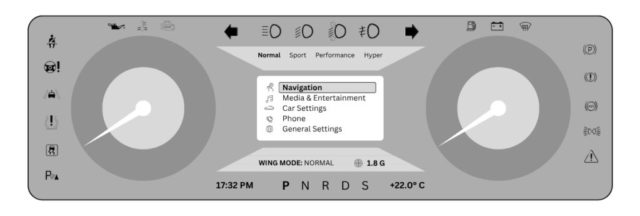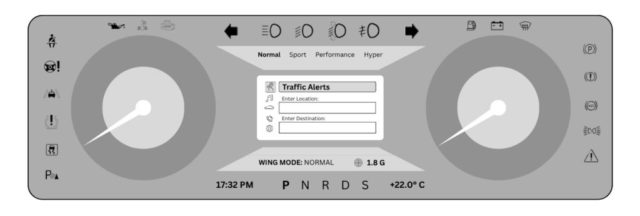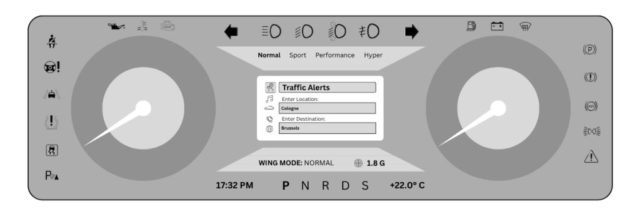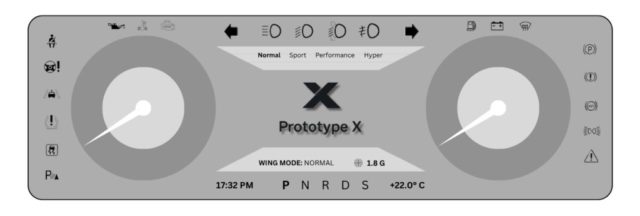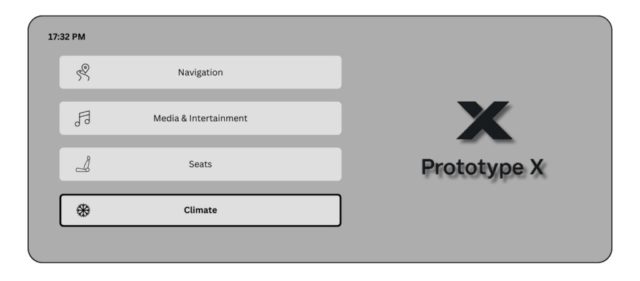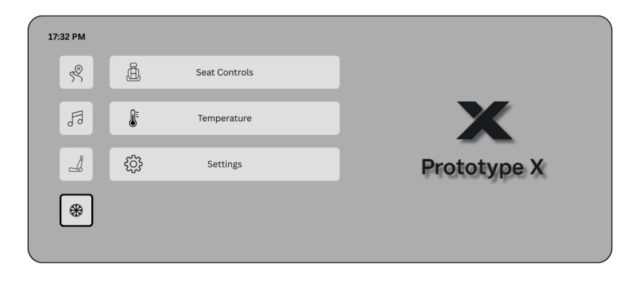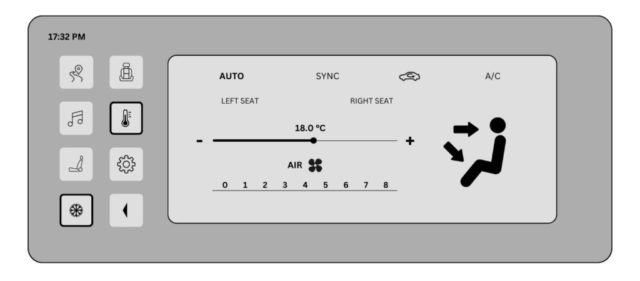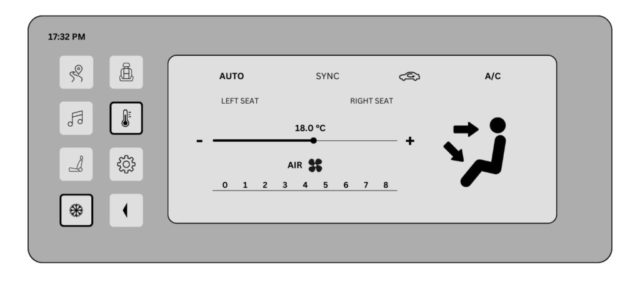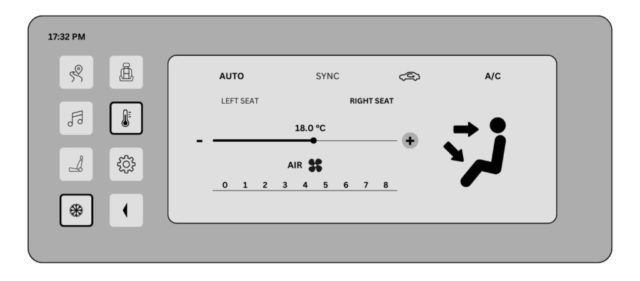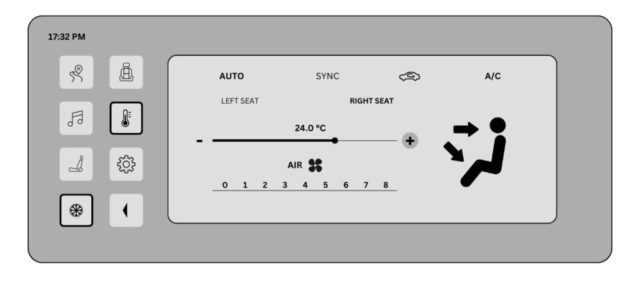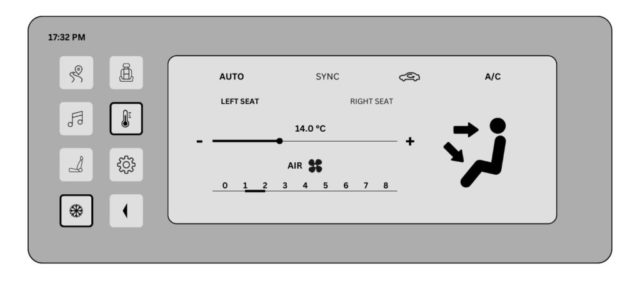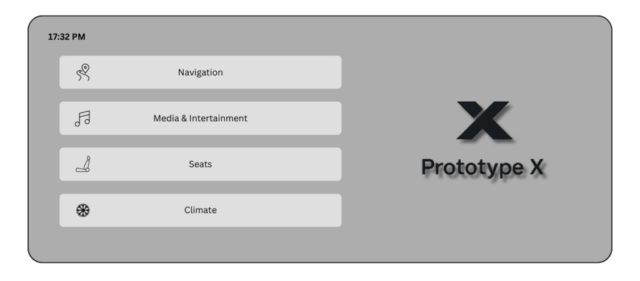Infotainment System UX – Prototype X
The Prototype X car model is a hypercar looking for the right driver to tame the wild beast in it. The brand’s DNA is a combination of exclusivity, exoticism and brute force.
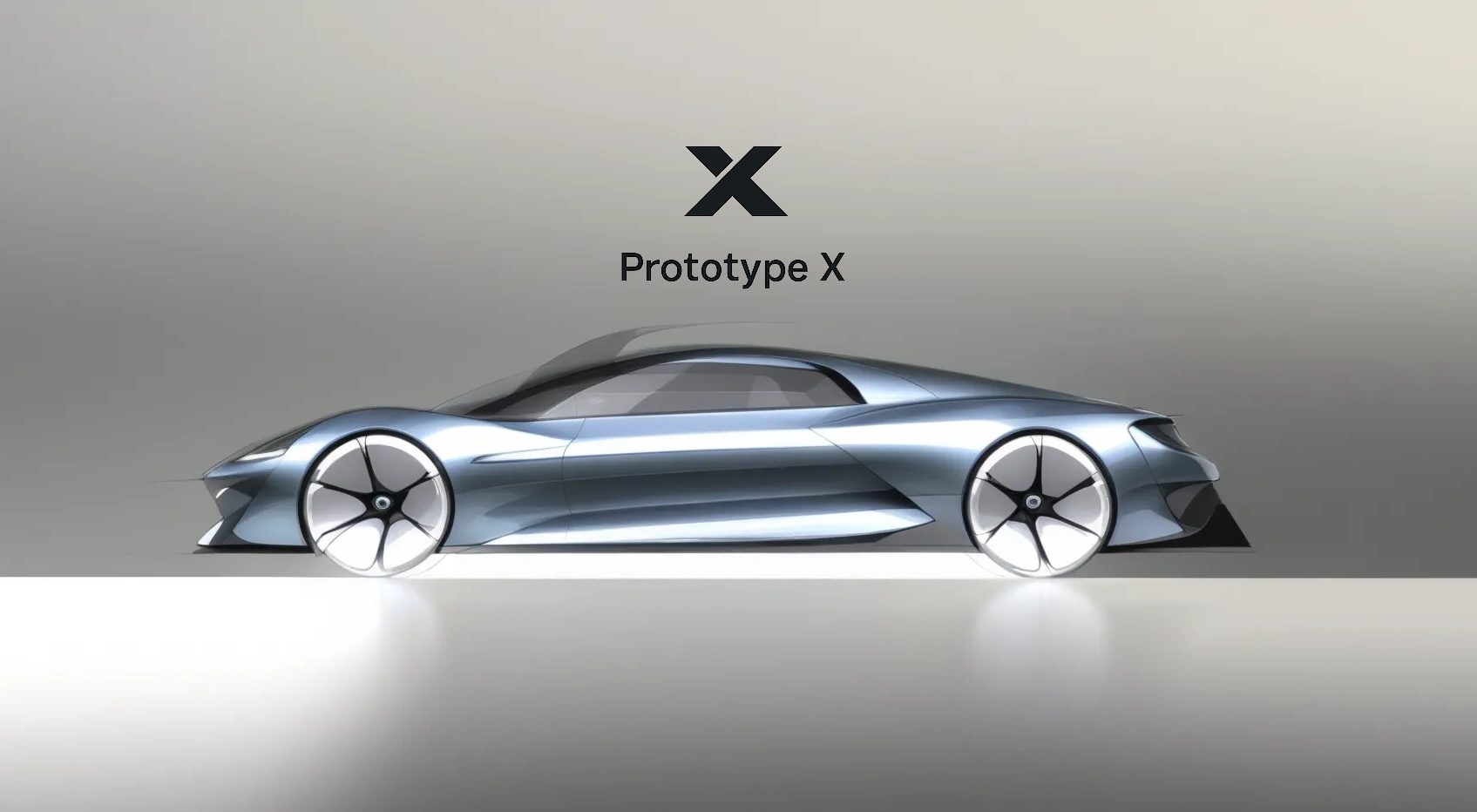
Project Overview
The Vision Behind
Prototype X
Prototype X is a 968 horsepower and a 365 km/h top speed high-performance hypercar designed for raw speed enthusiasts.
Infotainment Systems & Futuristic Design
Instant Feedback
Loop At Top Speeds
Shaping a unique User Experience driven by a 360° panoramic view.
Unlike most hypercars that treat the center console as a cockpit extension for the driver, Prototype X reimages the console as a shared interface. The flat, wide layout invites interaction from both the driver and the passenger, excluding any hierarchy.
This egalitarian design empowers the passenger with access to key controls (media, climate, navigation view), elevating them from passive rider to engaged co-navigator. It’s a subtle shift in geometry, but a bold shift in UX philosophy: equal access, equal agency.
In hypercars, driver-centrism is not just a design trend; it’s a philosophy rooted in performance, control, and emotional experience. The driver is the primary user despite the wide features of Prototype X, especially in a high-performance environment. At top speeds the Interface of the console is reduced to minimal distraction with less menus, less interactions, for more tactile and visual clarity.
A large console opens up storytelling, immersion, and emotional engagement. Ambient digital animation like particle flows, abstract waveforms, holographic loops, etc. that subtly change based on drive mode, speed, or user interaction set this hypercar apart from traditional hypercars that downplay infotainment. These animations enhance the feeling of being in a science fiction next-gen super machine.
When switching between Drive, Sport, or Hyper Mode, the screen can animate dramatically, almost like a cinematic “sequence” (pulsing circuits, glowing engine cores, digital morphing, etc.). In Sport and Hyper Mode drives, the console is reduced to minimal distraction with less menus, less interactions, for more tactile and visual clarity. With this console I’m imagining a future where digital interfaces are sculptural and sensory, not merely utilitarian.
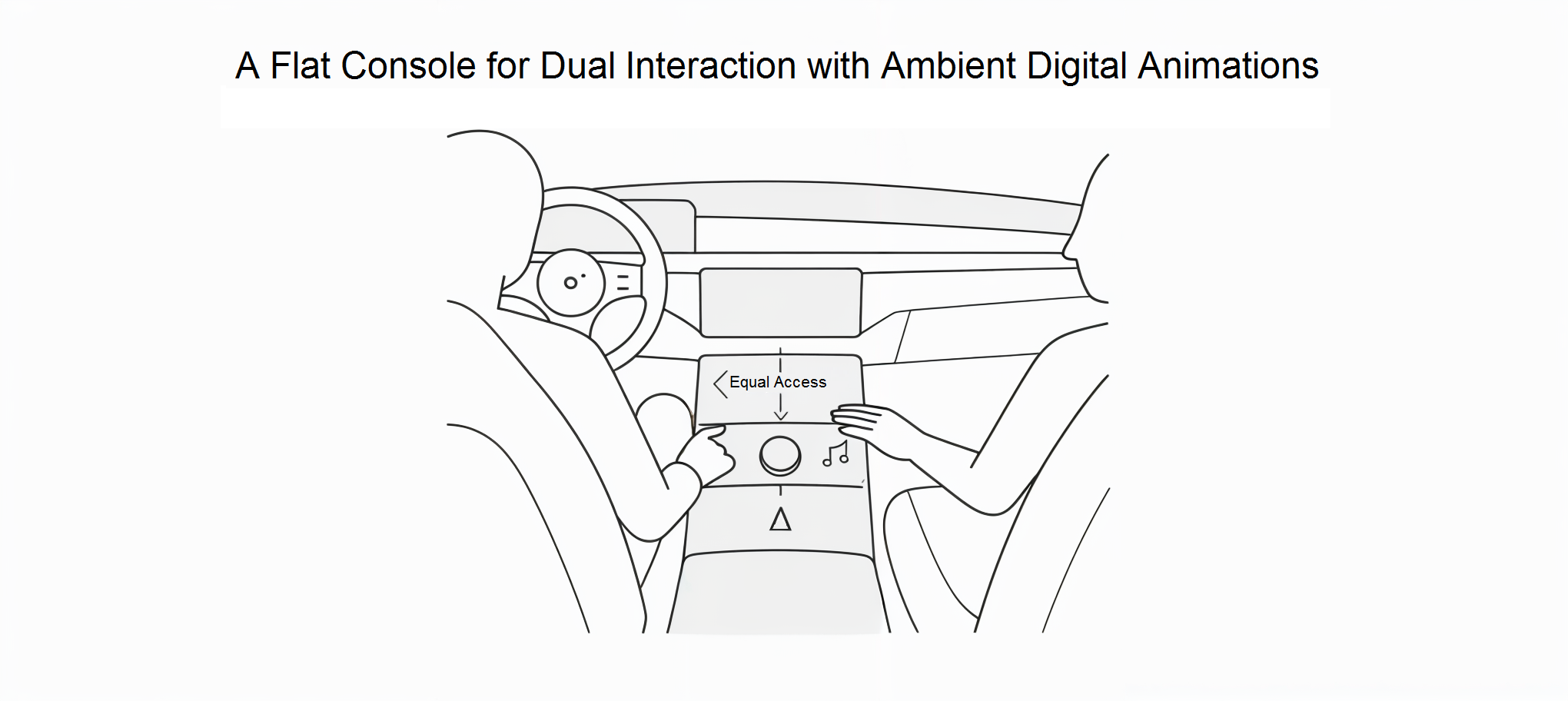


1. Competitive Inspiration
How Hypercars Fare in UX Design
Many design philosophies shape the market with unique approaches and nuances.
Market Research
Given the futuristic design, dual-role central console, and sci-fi inspiration of Prototype X, the most comparable hypercars are: Aston Martin Valkyrie, Mercedes-AMG One, Koenigsegg Jesko, McLaren P1 GTR, Rimac Nevera, Bugatti Chiron, Ferrari SF90 Stradale, and Pagani Huayra.
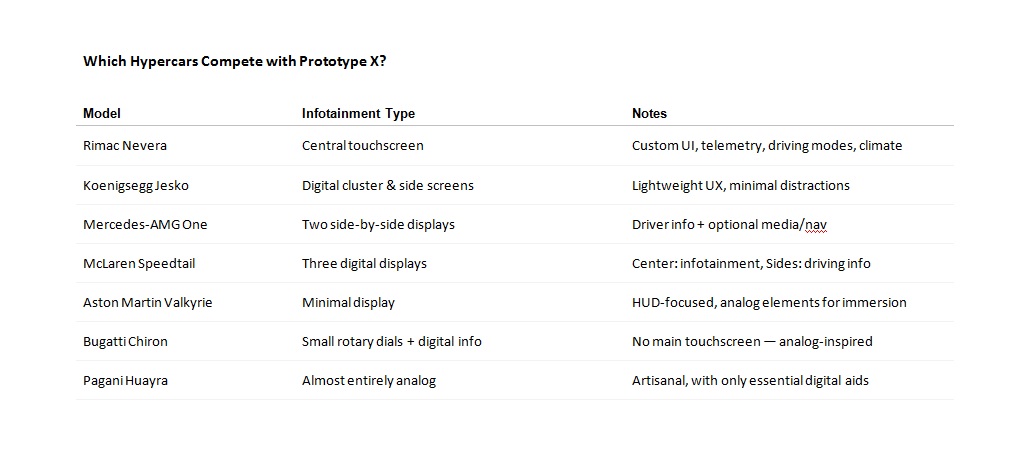
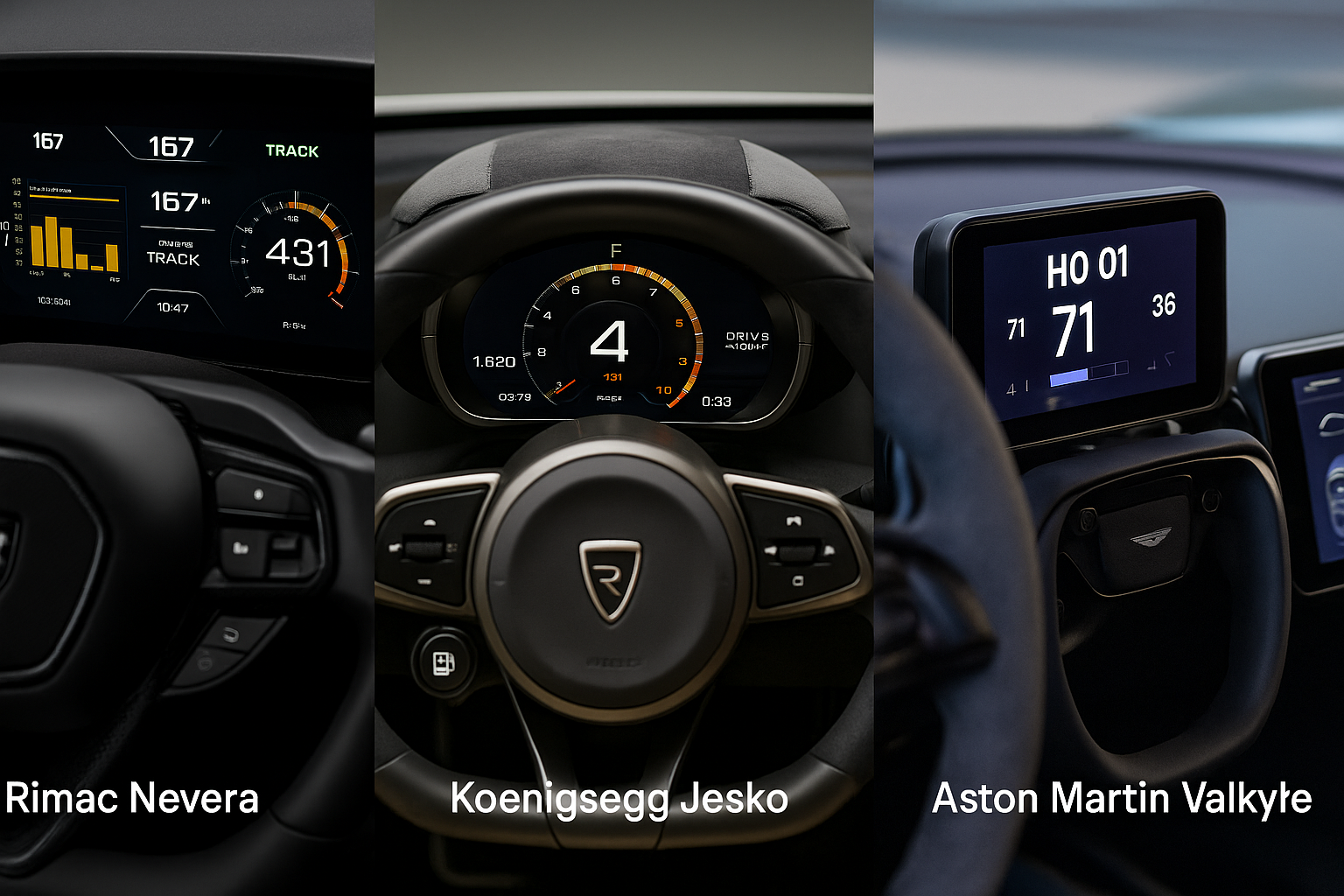
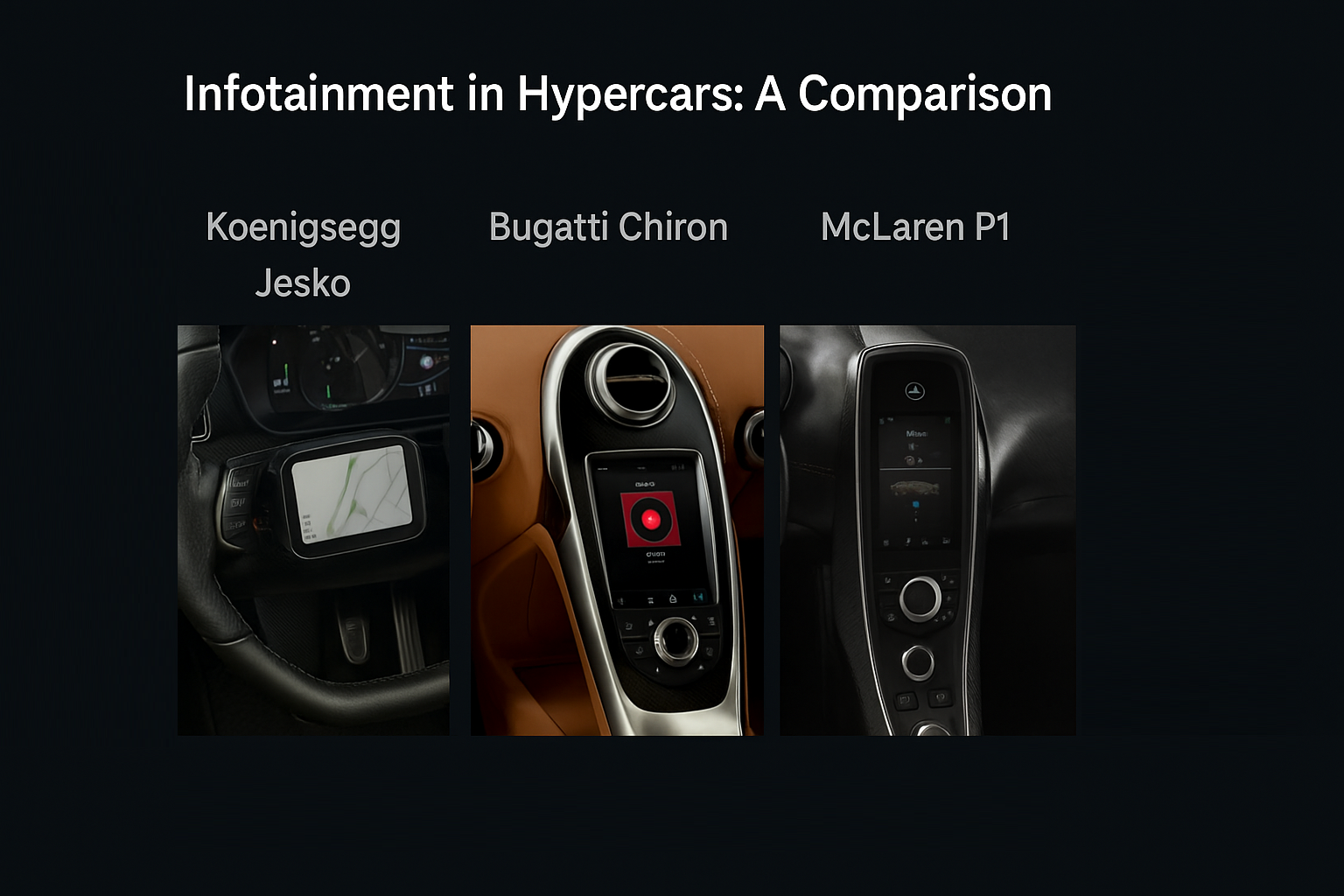
SWOT Summary
How can speed enthusiasts enjoy top speeds with an integrated seamless emotional feedback loop?
The Prototype X infotainment system is engineered around the driver’s command center; it’s immersive, responsive, and surgically efficient. Instead of shared displays or split dashboards, the interface is driver-dominant, with a single panoramic screen curved toward the pilot’s line of sight.
Designed for fast-paced decision-making, the system integrates navigation, performance metrics, and media into one fluid layer. The rotary dial becomes an extension of the hand, while voice prompts for the driver offer access to core actions, minimizing visual load and maximizing driving presence.
Unlike the Rolls-Royce Competition’s dual-dashboard model, Prototype X centralizes control, placing the driver at the helm of all interaction. The passenger is a welcomed co-rider, with limited but intuitive access to comfort or media via soft handoff modes or ambient gestures.
This setup mirrors the DNA of next-gen hypercars: minimal distraction, total focus, and a futuristic cockpit-like environment where every control is within reach. It’s not about luxury for all — it’s about clarity for one.
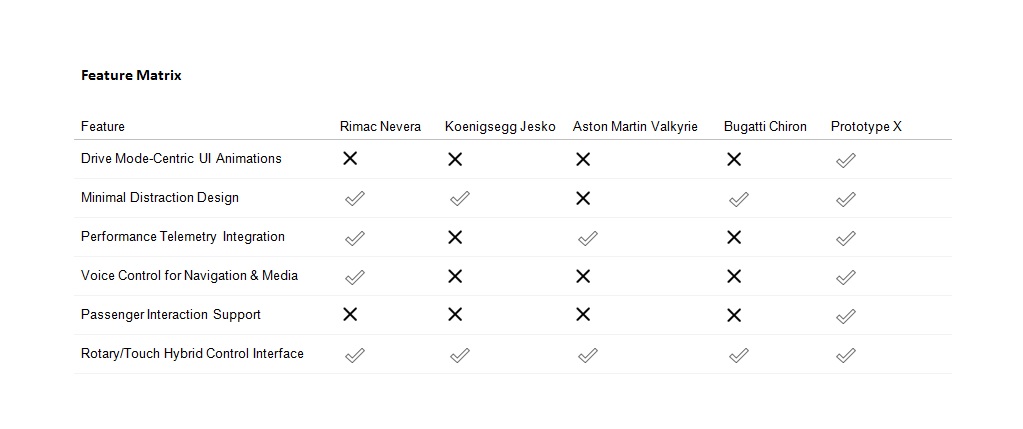
2. Define
Performance imagined for the raw speed purists
Prototype X is a 968 horsepower and a 365 km/h top speed high-performance hypercar for raw speed enthusiasts. The infotainment system is designed to be minimal, fast, and tactile, with a futuristic touch.
For Top Speed Enthusiasts
User Personas
Lorem ipsum dolor sit amet, consectetur adipisicing elit, sed do eiusmod tempor incididunt ut labore et dolore magna aliqua. Ut enim ad minim veniam, quis nostrud exercitation ullamco laboris nisi ut aliquip ex ea commodo consequat.
User Research
The Prototype X drivers are speed enthusiasts who usually own a second car and occasionally enjoy the thrill of testing the power under the hood on a Sunday morning empty motorway.
Design Goals
- Maximum focus, minimum distraction
- Seamless driver-passenger input sharing
- SciFi-inspired fluidity and feedback
Lorem ipsum
Lorem ipsum dolor sit amet, at mei dolore tritani repudiandae.
Information Architecture

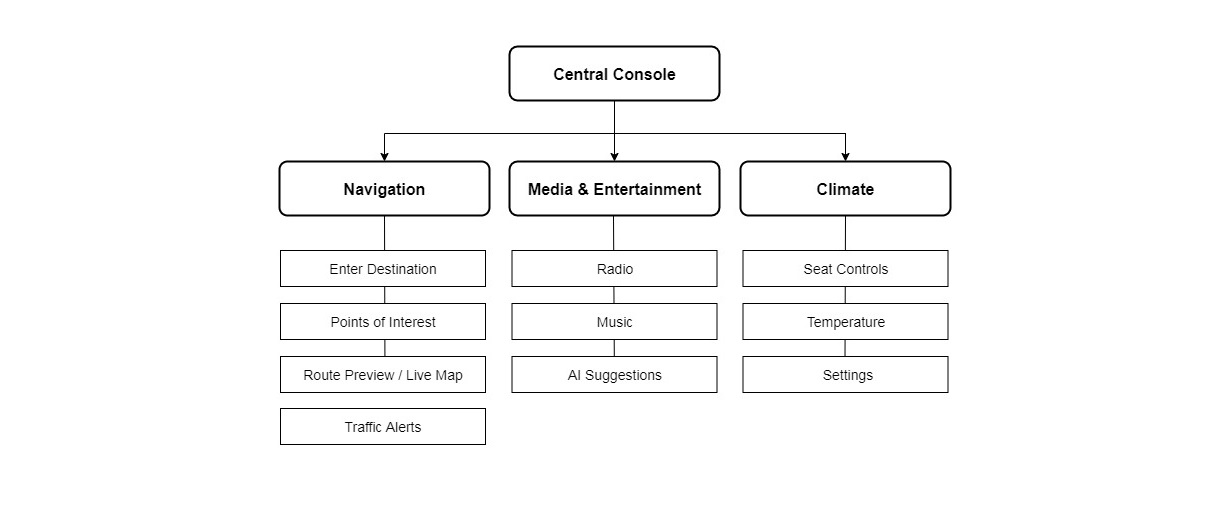
3. Interaction Scenarios / Microinteractions
Enjoy the best flows and interactions
combined together
Showcasing the dynamic user flows and microinteractions that define the in-cabin experience of the Prototype X infotainment system.
Designed around fluid gesture control, visual clarity, and contextual responsiveness, the interface enables users to seamlessly navigate between features like music, climate, and driving modes with minimal friction. These annotated flows and microinteractions reflect real-world usage priorities — quick access, smooth transitions, and constant system feedback — ensuring the experience remains both elegant and driver-safe.
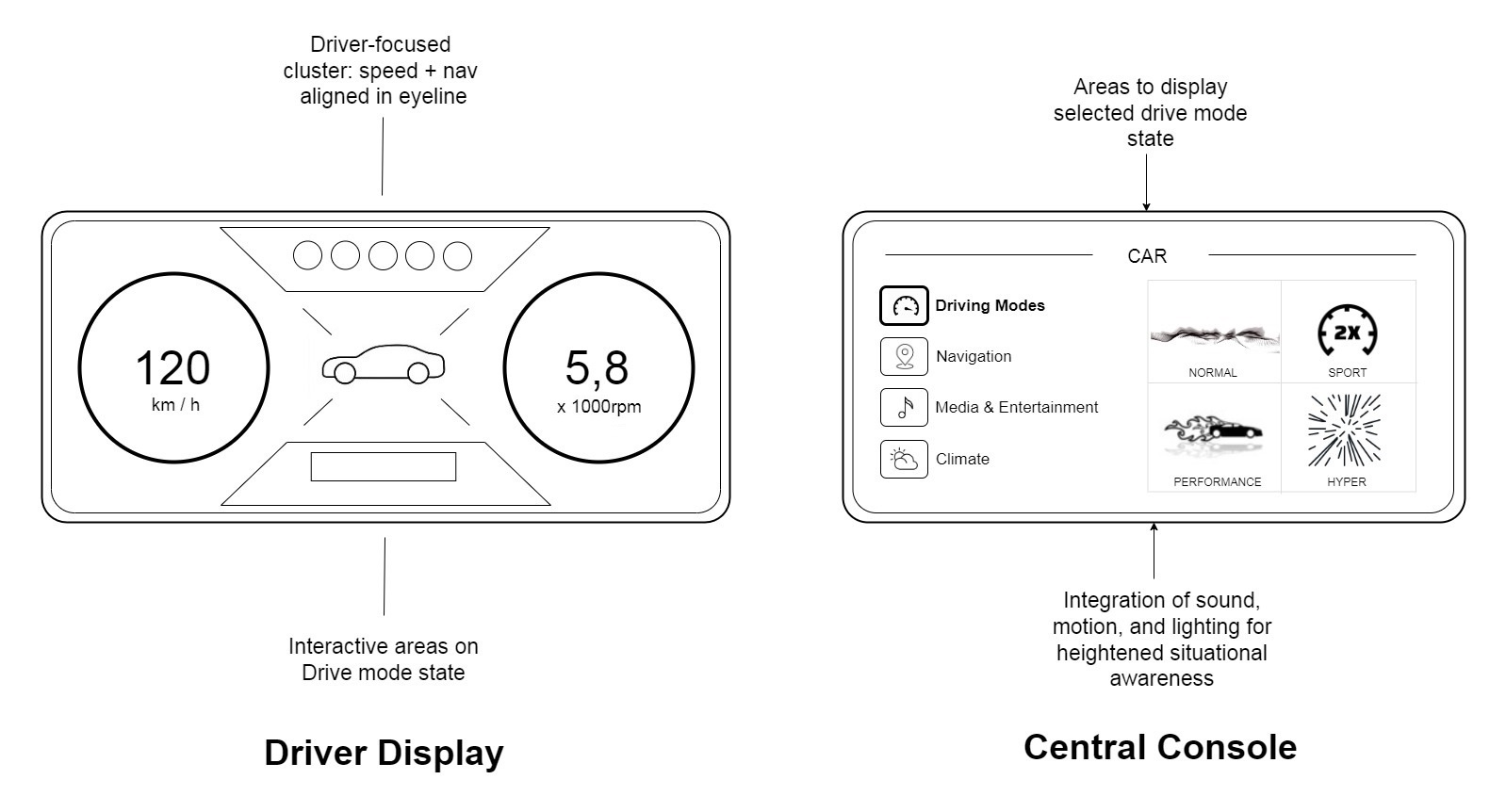
These sketches illustrate key user flows within the infotainment system, demonstrating how seamless interactions are achieved across both driver and passenger touchpoints.

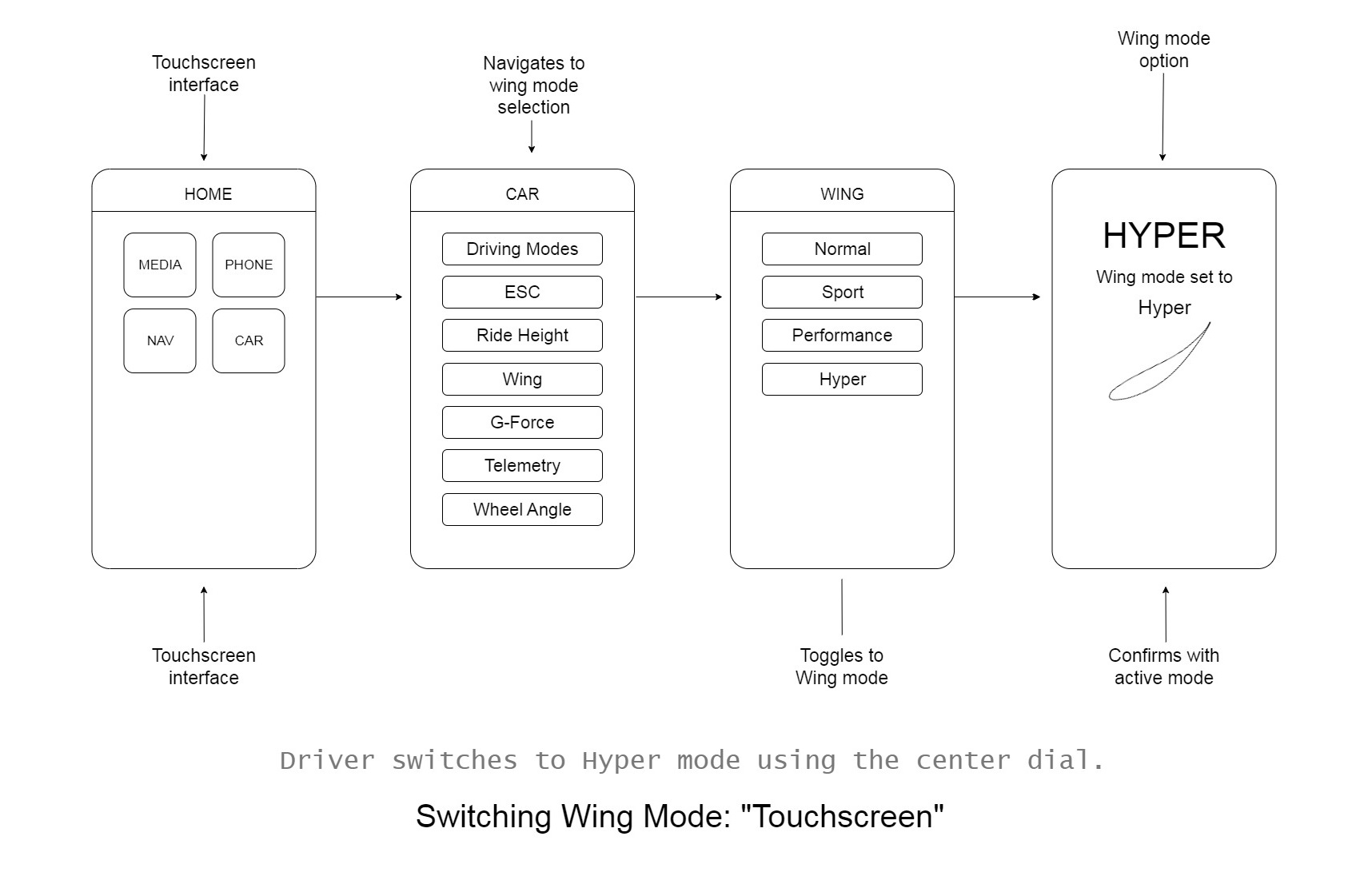
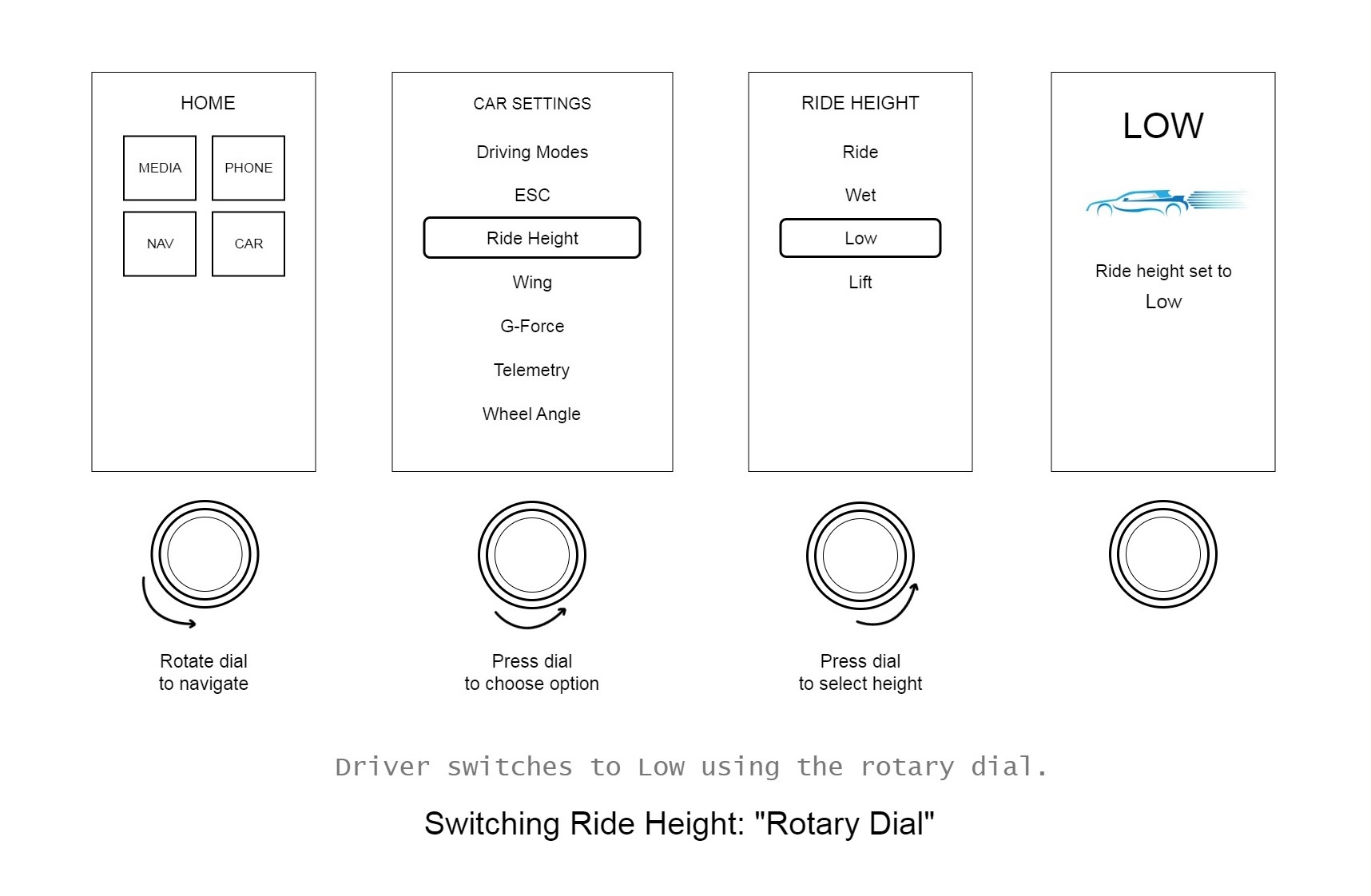
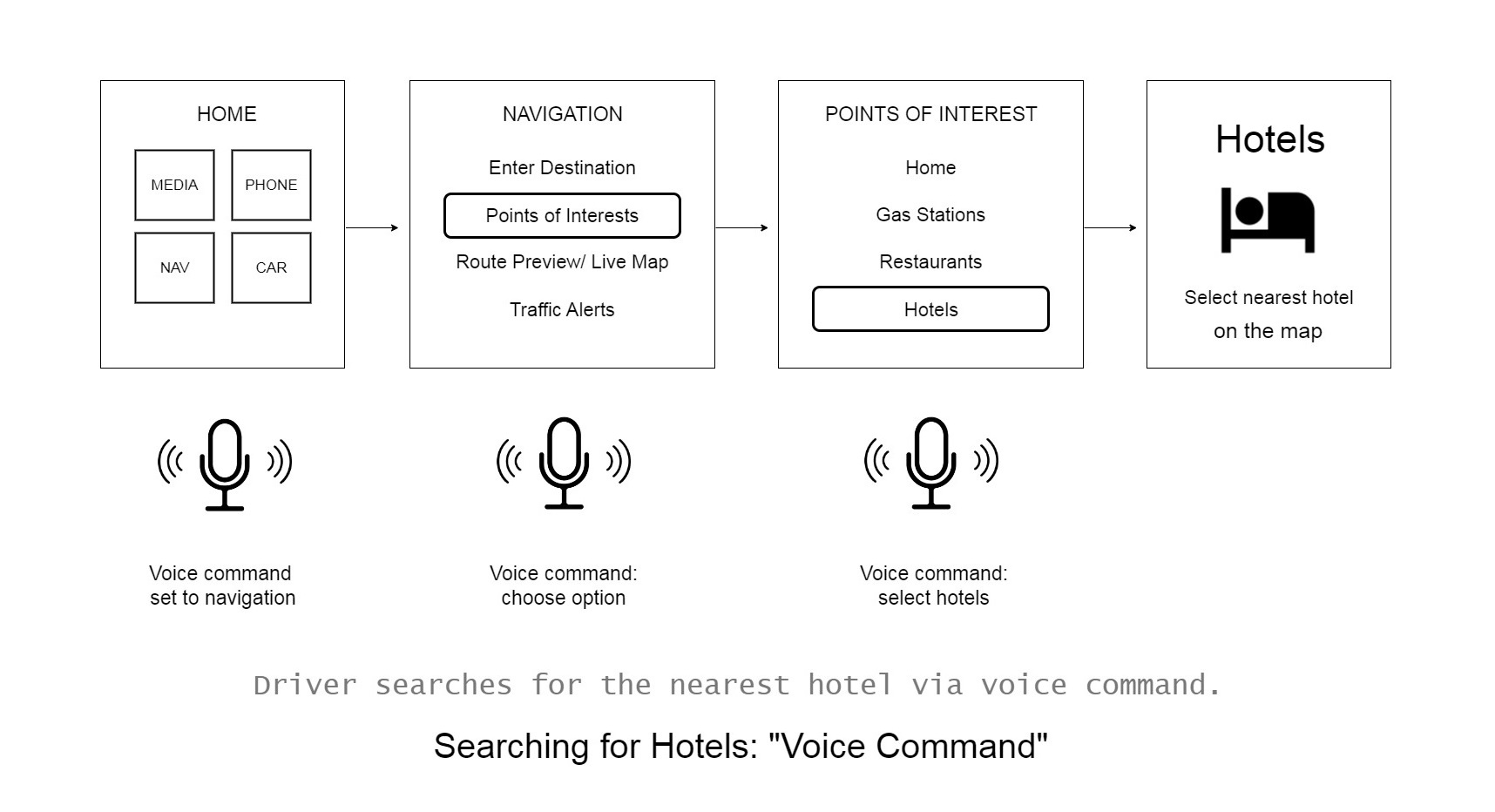
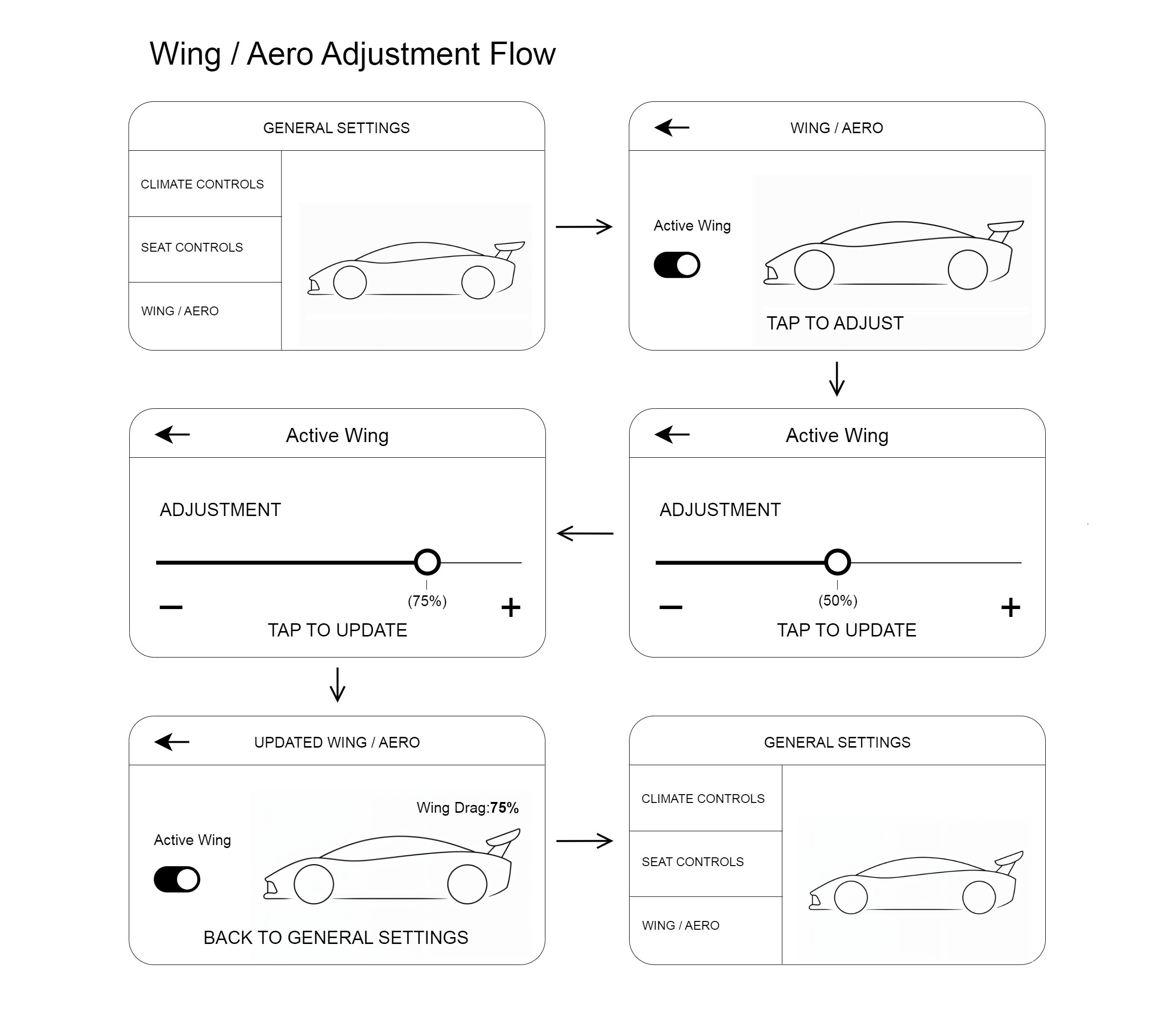
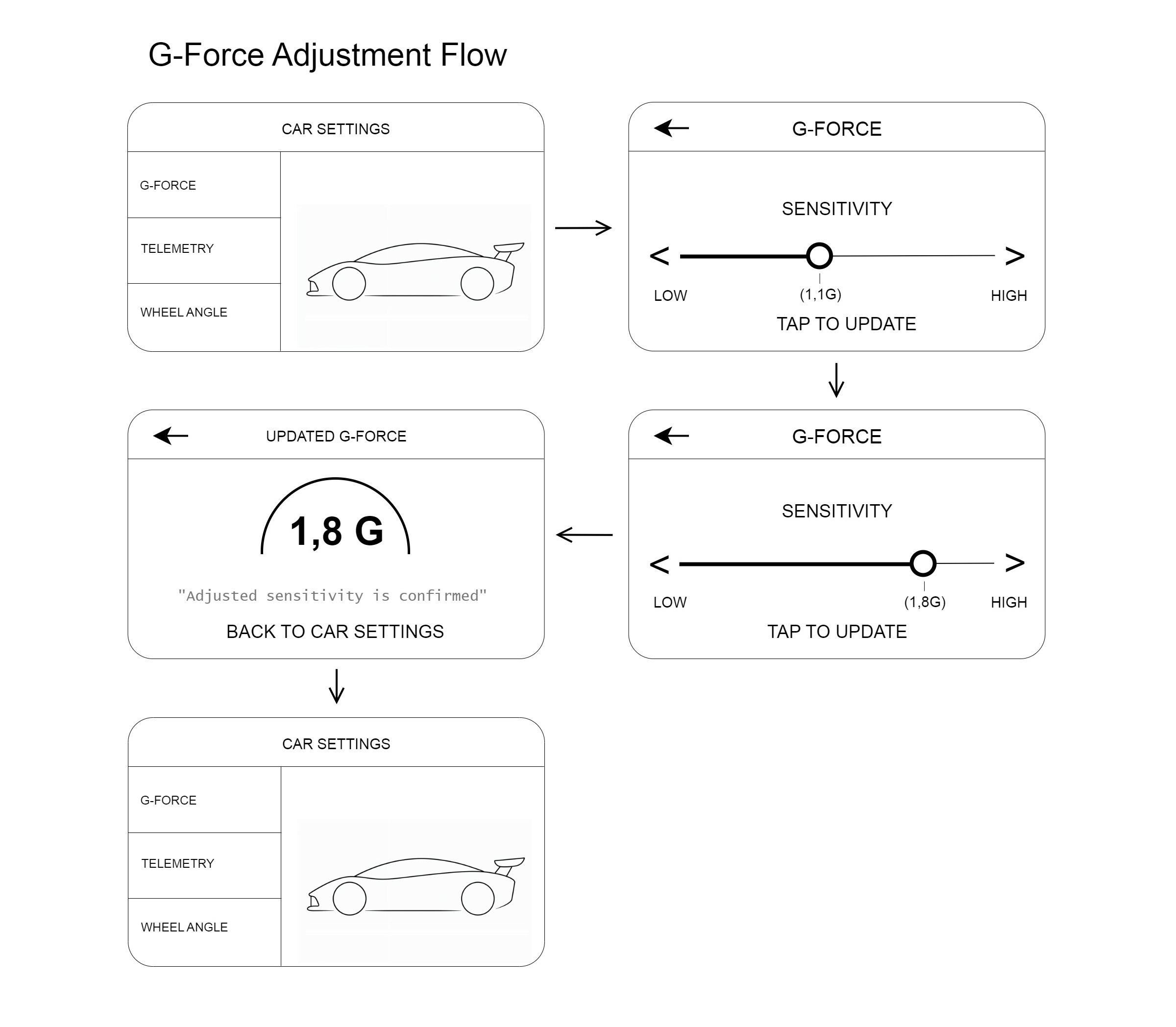
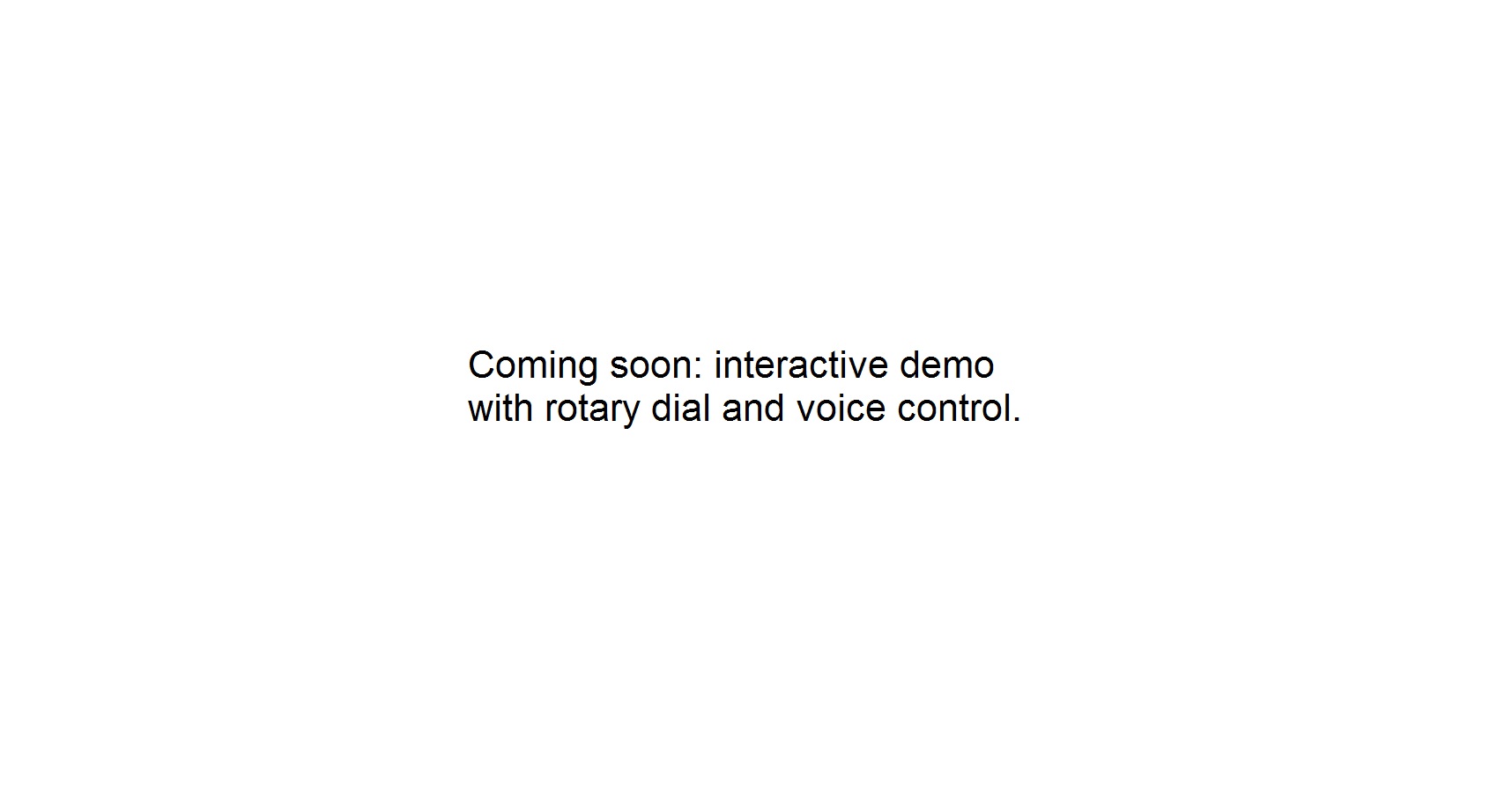
4. Refine
Expressing Brand DNA through A Futuristic Interface
UX/UI Design is no longer just an aesthetic consideration, but a strategic imperative that automotive industry leaders cannot afford to ignore.
Brand DNA
This prototype represents a vision of a futuristic, high-performance vehicle, where every interaction reflects precision, control, and cutting-edge intelligence. In this context, the digital experience plays a crucial role in reinforcing the car’s personality — bold, responsive, and intuitive.
The UI was crafted with the following brand traits in mind:
- Driver-centric orientation: asymmetric layouts prioritizing focus, glanceability, and speed
- Tech-forward aesthetics: sharp visual language, ambient glow accents, and smart animations
- Performance feedback: real-time vehicle data, adaptive drive mode highlights, and gesture-based control
- Immersive experience: integration of sound, motion, and lighting for heightened situational awareness
- Minimal learning curve: intuitive menu flows and interactions that reduce cognitive load, even at high speeds
This is not just an infotainment interface, it’s a digital co-pilot, designed to heighten the thrill of driving while delivering clarity, responsiveness, and confidence at every turn.
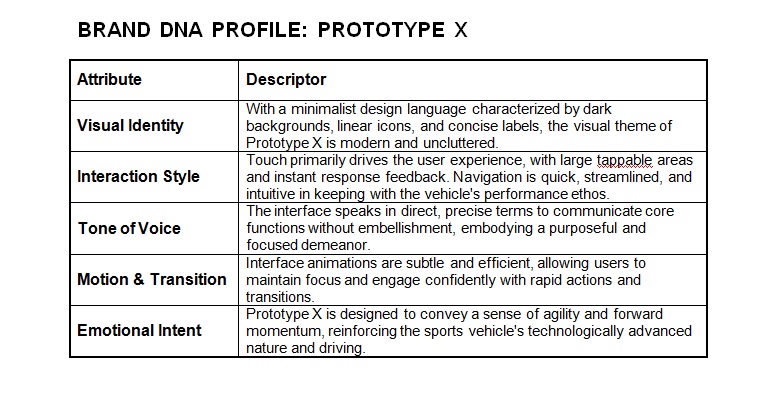
Wireframes & Prototypes
The driver’s dashboard consists of a flat large screen for sports cars with 2 essential gauges that allows you to display a multitude of information on many screens. Information about the rear spoiler, the G-force for top speeds, the height of the car, as well as telemetry data are available from there.
The driver turns on his car and the screen automatically switches from the car model badge to the dashboard. Today, the driver wants to go from Cologne, Germany, to Brussels in Belgium. It’s Friday evening, a lot of travelers are on the road and as usual, he expects traffic jams on the way. He wants to know where these traffic jams are on the highway so that he knows where to avoid them on the route.
Before taking the road, his traveling companion decides to increase the temperature of his cabin, he caught a cold. He decides to increase the ventilation to get a breeze of fresh air.
With 25 ° C temperature reported outside the driver on his side thinks it’s too hot. He’s suffocating and reduces the temperature as well as the ventilation in his cabin. The 2 passengers opted for 2 opposite room conditions: the central console allows both passengers to be accommodated according to their needs.
5. Final Product
Enjoy the best design and functions combined together
Lorem ipsum dolor sit amet, consectetur adipisicing elit, sed do eiusmod tempor incididunt ut labore et dolore magna aliqua. Ut enim ad minim veniam, quis nostrud exercitation ullamco laboris nisi ut aliquip.
Emotional Design
Lorem ipsum dolor sit amet, at mei dolore tritani repudiandae. In his nemore temporibus consequuntur, vim ad prima vivendum consetetur. Viderer feugiat at pro, mea aperiam
Design System
Lorem ipsum dolor sit amet, at mei dolore tritani repudiandae. In his nemore temporibus consequuntur, vim ad prima vivendum consetetur. Viderer feugiat at pro, mea aperiam
Style Guide
Lorem ipsum dolor sit amet, at mei dolore tritani repudiandae. In his nemore temporibus consequuntur, vim ad prima vivendum consetetur. Viderer feugiat at pro, mea aperiam

UX Heuristics & Accessibility
Applying Heuristic
Principles In UX/UI Designs
Solving problems, design and product usability with pragmatic methods.
The infotainment system of Prototype X is built not only for speed, but for clarity, control, and inclusivity. Every microinteraction — from adjusting the active wing to navigating G-force telemetry — was crafted using Jakob Nielsen’s 10 usability heuristics, adapted to the unique demands of high-performance driving.
This system balances aesthetic minimalism with feedback-rich interactions, supporting both track-day veterans and casual drivers. Even in a hypercar cockpit, accessibility is no longer optional — it’s integral.
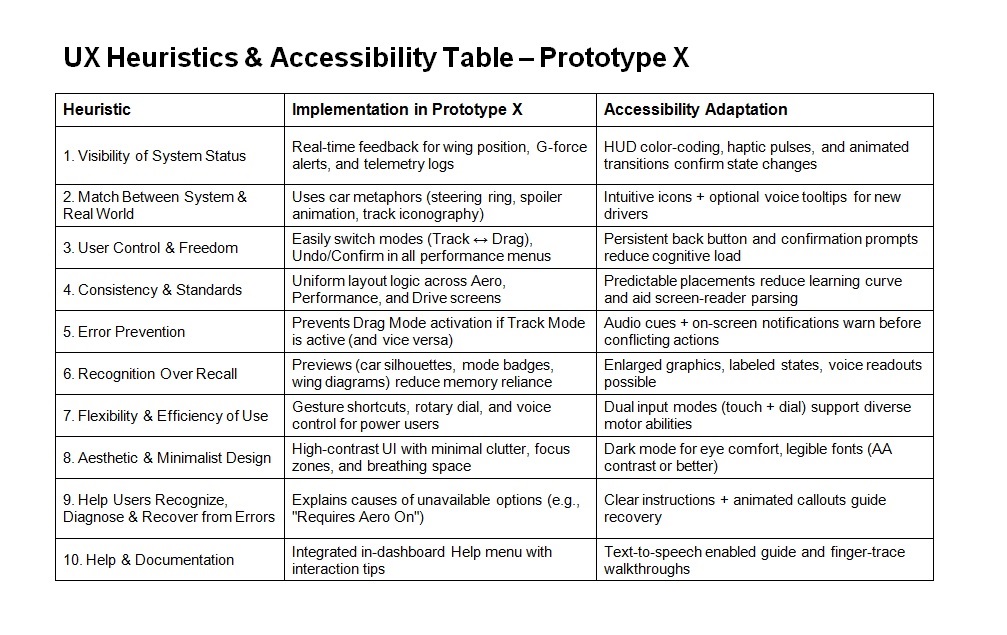
The infotainment system of Prototype X is optimized for the hypercar context. Unlike luxury-first systems, Prototype X prioritizes responsiveness, personalization, real-time performance feedback, and driver-machine symbiosis.
Every touchpoint is designed to serve high-speed decision-making with cinematic clarity and immersive control, while still maintaining visual elegance and intuitive flow. The system blends track-grade telemetry with a dynamic UI that adapts to driver input and environment.
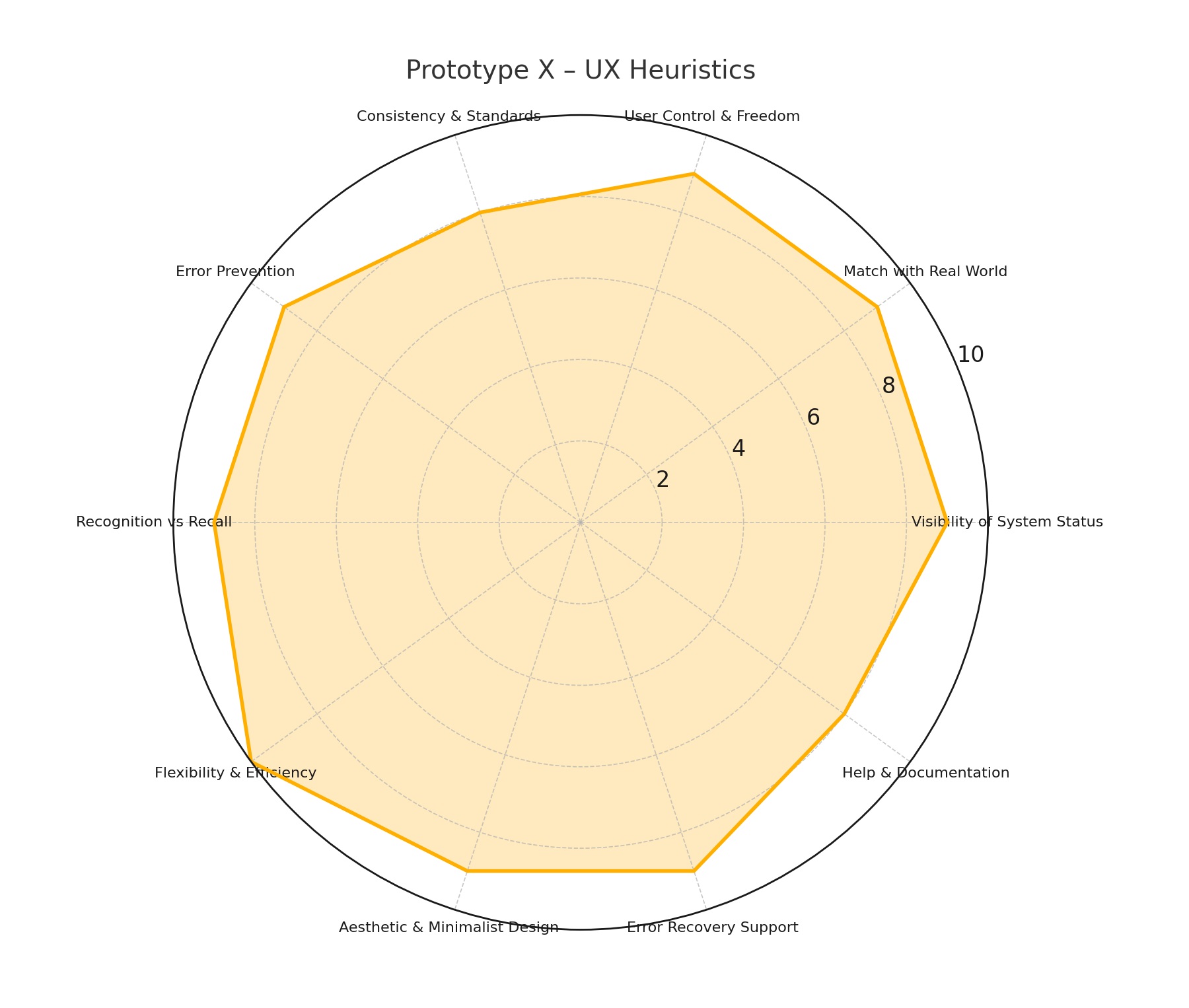
6. Reflection & Next Steps
What I Learned & The Big Takeaways
What’s next, what needs to be worked on: My final thoughts.

